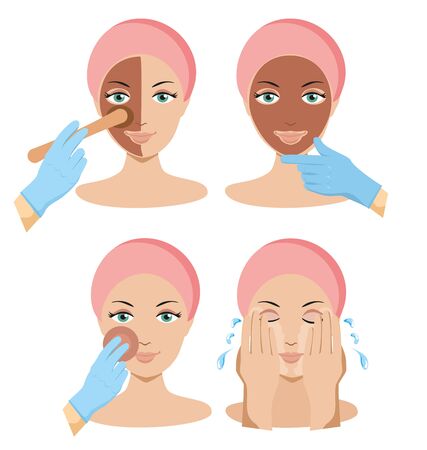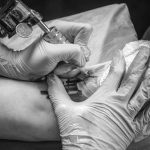1. Understanding Skin Tightening Options
As we age, our skin naturally loses its elasticity due to decreased collagen and elastin production. This can lead to sagging, fine lines, and wrinkles. Fortunately, modern cosmetic treatments offer a variety of skin tightening options to help restore a youthful appearance. These treatments generally fall into two categories: non-surgical and surgical procedures.
Non-Surgical vs. Surgical Skin Tightening
When considering skin tightening, its important to understand the key differences between non-surgical and surgical approaches. Each option has its own benefits, recovery time, and effectiveness. Below is a quick comparison:
| Aspect | Non-Surgical Skin Tightening | Surgical Skin Tightening |
|---|---|---|
| Procedure Type | Minimally invasive or non-invasive treatments using lasers, ultrasound, or radiofrequency | Surgical procedures such as facelifts or neck lifts that involve incisions and tissue repositioning |
| Recovery Time | Little to no downtime; patients can resume daily activities quickly | A few weeks of recovery time with potential swelling and bruising |
| Results | Gradual improvement over time; may require multiple sessions | Dramatic and long-lasting results in a single procedure |
| Candidacy | Ideal for mild to moderate skin laxity; best for those seeking subtle improvements | Recommended for individuals with significant sagging who want more noticeable results |
The Science Behind Skin Tightening
The goal of both non-surgical and surgical treatments is to stimulate collagen production and improve skin firmness. Non-surgical methods typically use energy-based devices to heat the deeper layers of the skin, triggering natural collagen regeneration. Surgical procedures, on the other hand, remove excess skin and tighten underlying tissues for a more immediate transformation.
Which Option Is Best for You?
Your choice between non-surgical and surgical skin tightening depends on several factors, including your age, skin condition, desired results, and willingness to undergo surgery. Consulting with a qualified cosmetic specialist can help you determine the best approach based on your unique needs.
2. Non-Surgical Skin Tightening: Benefits and Limitations
Non-surgical skin tightening treatments have become increasingly popular for those looking to achieve firmer, more youthful skin without undergoing surgery. These procedures use advanced technology to stimulate collagen production and improve skin elasticity with minimal downtime. Below, we explore some of the most common non-invasive skin tightening options, their benefits, and potential drawbacks.
Popular Non-Surgical Skin Tightening Treatments
Radiofrequency (RF) Therapy
RF therapy uses energy waves to heat the deeper layers of the skin, stimulating collagen and elastin production. This treatment is commonly used on the face, neck, and body.
Benefits:
- Non-invasive with no incisions or anesthesia required
- Boosts collagen production for gradual skin tightening
- Minimal discomfort and downtime
- Safe for most skin types
Limitations:
- Multiple sessions may be needed for optimal results
- Results develop gradually over weeks or months
- Mild redness or swelling may occur temporarily
- Less effective for severe skin laxity compared to surgical options
Ultrasound Therapy
This treatment uses focused ultrasound energy to penetrate deep into the skin layers and promote collagen regeneration. Ultherapy is one of the most well-known ultrasound-based treatments.
Benefits:
- Tightens skin naturally by stimulating deep collagen production
- No downtime—patients can resume daily activities immediately
- A single session can provide noticeable improvements
- Results last for up to a year or more
Limitations:
- Slight discomfort during the procedure
- Takes several months to see full results
- Mild swelling or tenderness post-treatment
- Certain areas may require multiple treatments for best outcomes
Laser Skin Tightening
This method uses laser energy to heat the dermis and encourage collagen remodeling. Fractional lasers and non-ablative lasers are commonly used for this purpose.
Benefits:
- Smooths fine lines and improves skin texture
- No surgery or significant recovery time required
- Treatments can be customized for different skin concerns
- Painless or mild discomfort during treatment
Limitations:
- Mild redness or sensitivity post-treatment
- A series of sessions may be necessary for optimal results
- Lighter lasers may not work as effectively on severe sagging
- Sunscreen use is essential post-treatment to protect sensitive skin
A Quick Comparison of Non-Surgical Treatments
| Treatment Type | Main Benefit | Main Limitation | Downtime | No. of Sessions Needed |
|---|---|---|---|---|
| Radiofrequency (RF) | Tightens skin by boosting collagen production | Mild redness/swelling; requires multiple sessions | No downtime | A series of treatments |
| Ultrasound Therapy (Ultherapy) | Pentrates deep layers for long-lasting lift & firmness | Mild discomfort; takes months for full effect | No downtime | A single session in many cases |
| Laser Skin Tightening | Smooths texture & reduces fine lines | Mild redness; requires sun protection post-treatment | No downtime | A few sessions may be needed |
If youre looking for a way to tighten your skin without surgery, these non-invasive treatments offer promising results with little to no recovery time. However, keep in mind that they may require multiple sessions and take time before showing full effects. Consulting with a qualified provider will help determine which option is best suited to your specific needs.

3. Surgical Skin Tightening: What to Expect
For those looking for more dramatic and long-lasting results, surgical skin tightening procedures like facelifts and neck lifts may be the best option. These procedures involve removing excess skin and tightening underlying muscles to create a smoother, more youthful appearance.
Common Surgical Skin Tightening Procedures
Surgical skin tightening typically includes the following procedures:
- Facelift (Rhytidectomy): A facelift addresses sagging skin on the face and jawline by lifting and repositioning tissues.
- Neck Lift (Platysmaplasty): This procedure tightens loose skin around the neck, reducing the appearance of wrinkles and sagging.
- Eyelid Surgery (Blepharoplasty): Although not a full skin-tightening procedure, eyelid surgery removes excess skin and fat around the eyes for a more youthful look.
What to Expect During Recovery
Surgical procedures require downtime for healing. Patients can expect swelling, bruising, and discomfort in the first few weeks. The table below outlines typical recovery timelines:
| Procedure | Initial Recovery Time | Full Healing Time |
|---|---|---|
| Facelift | 2-4 weeks | 3-6 months |
| Neck Lift | 2-3 weeks | 3-6 months |
| Eyelid Surgery | 1-2 weeks | Around 3 months |
Effectiveness and Long-Term Results
Surgical skin tightening delivers more noticeable and long-lasting results compared to non-surgical treatments. While results vary based on factors like age, skin type, and lifestyle, most patients enjoy firmer, younger-looking skin for 7-10 years or longer.
Key Benefits of Surgical Skin Tightening:
- Dramatic improvement: Removes significant sagging for a youthful appearance.
- Permanent results: Effects last much longer than non-surgical options.
- Treats deep wrinkles: More effective for severe skin laxity.
Potential Considerations:
- Surgical risks: Includes anesthesia risks, scarring, and infection.
- Certain downtime required: Recovery can take several weeks.
- Cost factor: Surgical procedures are generally more expensive than non-invasive options.
If youre seeking long-term results and dont mind the recovery time, surgical skin tightening may be worth considering. However, its essential to consult with a board-certified plastic surgeon to determine if youre a good candidate for these procedures.
4. Comparing Cost, Results, and Downtime
When deciding between non-surgical and surgical skin tightening, its important to compare the costs, expected results, and recovery times. Each option has its own advantages and trade-offs, so understanding these factors can help you make an informed choice.
Cost Comparison
The cost of skin tightening treatments varies depending on the procedure, provider, and location. Generally, non-surgical treatments are more affordable upfront, while surgical options require a larger investment but may provide longer-lasting results.
| Treatment Type | Average Cost |
|---|---|
| Non-Surgical (e.g., Ultrasound, Radiofrequency, Laser) | $500 – $5,000 (varies by area treated and number of sessions needed) |
| Surgical (Facelift, Neck Lift, etc.) | $7,000 – $15,000+ (includes surgeon fees, anesthesia, and facility costs) |
Expected Results
The effectiveness of skin tightening depends on the type of procedure chosen. Non-surgical treatments offer gradual improvements over time with minimal risk, whereas surgical procedures deliver more dramatic and long-lasting results.
| Treatment Type | Results Timeline | Longevity |
|---|---|---|
| Non-Surgical | Gradual improvement over weeks or months | A few months to a few years (maintenance treatments may be needed) |
| Surgical | Immediate noticeable change (final results after swelling subsides) | Typically 10+ years (depends on aging and lifestyle factors) |
Downtime and Recovery Periods
If you have a busy schedule or prefer minimal downtime, non-surgical treatments might be the better choice. Surgical procedures require more recovery time but offer longer-lasting changes.
| Treatment Type | Downtime | Pain & Side Effects |
|---|---|---|
| Non-Surgical | No to minimal downtime; resume daily activities immediately or within a few days | Mild redness, swelling, or tenderness for a few hours to days |
| Surgical | A few weeks of recovery; some restrictions on physical activity for up to a month or more | Pain, swelling, bruising; requires post-op care and follow-ups |
Which One Fits Your Needs?
Your decision depends on your budget, tolerance for downtime, and desired results. If youre looking for subtle improvements with minimal disruption to your routine, non-surgical options may be ideal. However, if youre seeking significant skin tightening with long-term effects, surgery could be worth the investment.
5. Which Option Is Right for You?
Choosing between non-surgical and surgical skin tightening depends on several factors, including your age, skin condition, personal goals, and lifestyle. Both options have their advantages, so its important to consider what works best for your needs.
Factors to Consider
Age and Skin Condition
Your age and the condition of your skin play a major role in determining the best treatment for you. Younger individuals with mild to moderate skin laxity may benefit from non-surgical treatments, while those with significant sagging might need surgical intervention.
| Factor | Non-Surgical | Surgical |
|---|---|---|
| Best for Age | 20s-50s (mild to moderate skin laxity) | 40s-70s (severe skin sagging) |
| Skin Elasticity | Good elasticity with minor sagging | Loose or excess skin needing removal |
| Treatment Area | Mild sagging in face, neck, arms, abdomen | Significant sagging in face, neck, body |
Your Personal Goals
If youre looking for subtle improvements without downtime, non-surgical treatments like radiofrequency or ultrasound therapy may be ideal. However, if you want dramatic and long-lasting results, a facelift or body lift might be more suitable.
Lifestyle and Recovery Time
Your daily routine and how much downtime you can afford should also influence your decision. Non-surgical options typically require little to no recovery time, making them convenient for busy individuals. Surgical procedures involve weeks of recovery but offer more noticeable changes.
| Lifestyle Factor | Non-Surgical | Surgical |
|---|---|---|
| Downtime Required | No downtime or minimal redness/swelling | A few weeks of recovery time needed |
| Pain Level | Mild discomfort during procedure | Pain and swelling post-surgery |
| Treatment Frequency | Multiple sessions may be required over time | A single procedure with long-term results |
The Right Choice for You
If youre unsure which option is best for you, consult with a board-certified specialist who can assess your skin condition and discuss your goals. A professional can help you determine whether non-surgical treatments will provide the results you desire or if a surgical approach is necessary.
Key Takeaways:
- If you prefer minimal downtime: Non-surgical treatments are a great choice.
- If you want long-lasting results: Surgery might be the better option.
- If you have mild sagging: Non-invasive methods can help tighten your skin.
- If you have severe sagging: Surgery is likely the most effective solution.
- If youre unsure: Consult with a professional to explore your options.
The right choice ultimately depends on your unique needs and expectations. Whether you opt for a non-invasive approach or surgery, both methods can help restore firmer, more youthful-looking skin.


